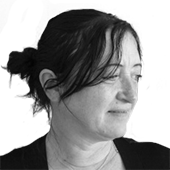Juniper Research estimates that the total wearables market will reach 350 million devices shipped by 2020, with connected clothing turning into a $1 billion dollar industry. This is primarily down to developments in conductive fabric and a rapid take up of smart sportswear. “A key challenge for wearables is to provide a concrete benefit or unique data,” explains James Moar, research author at Juniper Research. Here we take a look at five innovative wearables that do just that:
Wear it virtually!
Gesture interface specialist Leap Motion has come up with a ‘virtual wearable’ that combines an advanced augmented reality (AR) headset with a hand-tracking solution running at 150 frames per second, dubbed ‘power hands’. It tracks hand and finger movements enabling the user to manipulate the virtual world around them as naturally as in the real world, instead of having to learning complex interfaces and controls. Users can do everything from grasp virtual objects to painting in the air with their fingers using a virtual color palette. In the future, smartphones users may be able to use all the functions of their phone without having to look at the screen, using interactive tabs on the virtual hands.
Feeling words
Facebook has been working on a wearable device that can feel words. It is based on research into Braille and Tadoma, a communications language used by the deaf and blind, according to the Massachusetts Institute of Technology (MIT) Review. The device, which is worn on the arm, incorporates actuators that when set off causes vibrations that match phonemes or distinct units of sound that distinguish one word from another. The device could eventually help the visually or hearing impaired received text messages via vibrations.
A wearable way to assess Parkinson’s Disease
Australian company Global Kinetics Corp has developed a wrist-worn device that generates a score for bradykinensia. This slowness of movement is one of the main symptoms of Parkinson’s disease. Bradykinesia is caused by reduced levels of dopamine in the brain. The device is worn for seven days – after this period the data is downloaded by the doctor to get a picture of the patient’s condition, so that more personalized treatment plans can be created. The device can also be programmed to alert patients to take their Parkinson’s disease medication.
Contactless payment ring
Several banks have been experimenting with contactless payment wearables. ASB Bank in New Zealand, for example, has linked up with Fitbit Ionic to take payments via a tap of the watch. Now Commonwealth Bank of Australia (CBA) owned BankWest has launched Halo, a ring that works exactly like a contactless card, that lets users touch, pay and go. The Halo ring is customized for the users and cannot be reprocessed or reused. It is water resistant to 50 meters. In addition, the ring has no battery so doesn’t need to be charged. Instead it draws its power from the contactless reader on the payment terminal.
Tracking in your shoes
GTX Corp has come up with GPS SmartSoles, a non-visible GPS and cellular tracking sole that is placed inside the wearer’s shoes. A GPS tracking chip is connected to a global cellar network that sends location data to the GTX proprietary IoT platform showing the exact location of the wearer. Initially designed to monitor the whereabouts of people with cognitive memory disorders such as dementia or autism, the tracking sole can also be used for people at risk of kidnapping such as senior government employees. The soles can be trimmed to size to fit into any shoe and are water resistant.

Jan has been writing about technology for over 22 years for magazines and web sites, including ComputerActive, IQ magazine and Signum. She has been a business correspondent on ComputerWorld in Sydney and covered the channel for Ziff-Davis in New York.